In the middle of the Tang Dynasty, women's hairstyle, makeup, jewelry, and dress style has undergone a huge change. Heavy makeup and high buns, long skirts with large sleeves prevailed, and formed a variety of distinctive makeup styles.
At first, it was just regarded as grotesque, considered to be a sign of chaos, but later it developed into an issue discussed in the court. Although prohibited by the court, it is difficult to extinguish, getting more and more intense.
Shi Shi Zhuang
During the Zhengyuan period (785-805), the Ti Mei makeup (啼眉妆) and the Duo Ma bun (堕马髻) appeared first.
The prototype of the bun hanging on one side already appeared during the Kaiyuan period, but it evolved into more huge and exaggerated in the Middle Tang Dynasty. The eyebrows painted in the shape of characters "八", replaced the previous curved thin eyebrows.
The female figurines excavated during the Zhen Yuan period and the ladies of the "A Palace Concert" all showed such kind of makeup style.
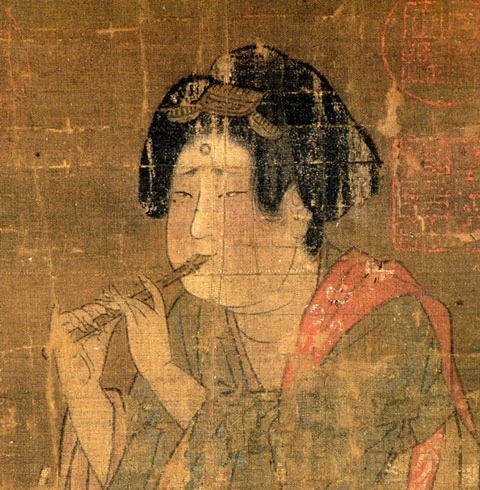
On this basis, the famous Shi Shi Zhuang (时世妆) was formed during the Yuanhe period (806-820). Bai Juyi, who loved to record the details of the costumes, depicted this makeup detail in the poem "Shi Shi Zhuang - Jing Rong Ye".
时世妆,时世妆,出自城中传四方。
时世流行无远近,腮不施朱面无粉。
乌膏注唇唇似泥,双眉画作八字低。
妍媸黑白失本态,妆成尽似含悲啼。
圆鬟无鬓堆髻样,斜红不晕赭面状。
昔闻被发伊川中,辛有见之知有戎。
元和妆梳君记取,髻堆面赭非华风。
It can be translated as: ...this kind of makeup is common in the city, the cheeks are not red, and the face is not powdered. The lipstick is black and the eyebrows are drawn in the shape of character eight. The original appearance is lost, and the makeup is dressed exactly like a sad cry...
The features of Shi Shi Zhuang can be seen: the eyebrows are shaved off and redrawn; no red powder, no white makeup, no slanting red, but the face is painted with an ochre color; the lips are painted black.
The "Zhe Mian (赭面, ochre color makeup)" mentioned in the poem is a kind of face makeup of Tubo, which is repeatedly mentioned in the literature. Old Book of Tang records that after Princess Wencheng entered Tubo, she "hated the Zhe Mian" and felt uncomfortable, Songtsen Gampo ordered prohibition, but was not widely and permanently implemented.
In recent years, a large number of murals of figures have been unearthed in the tombs of Tibetan, and almost all of the figures are painted with various stripes, dots, and blocks of ochre color on the forehead, nose, chin, cheeks, and other parts of the face. Corresponding to the "Zhe Mian" in literature, showing its various painting methods.
In the Tang Dynasty, "Zhe Mian" was considered a novel fashion of exotic beauty and was imitated and popular among women. However, Bai Juyi considered this kind of makeup to be a sign of chaos. After the An Lushan Rebellion, the Tubo army took advantage of the situation and often drove straight into the Tang territory, even attacking Chang'an twice, posing a great threat to the Tang rule.
So although such a style of makeup was very popular among women at the time, still despised by the Tang Dynasty scholars. The New Book of Tang also considers this makeup "looks like sorrowful cries" and is a "sad image of the fallen state".
Xue Yun Zhuang
In the Changqing period (821-824), Shi Shi Zhuang and upgraded to the more bizarre Xue Yun Zhuang (血晕妆). At that time, the woman with high buns, painted a few deep purple horizontal lines on the cheeks, as if the face was wounded.
It is extremely rare that the murals of the two tombs in Anyang, Henan Province, during the Middle Tang Dynasty, depict almost all women in such a makeup style, which is not different from the records. The terracotta figurines unearthed in the tombs are also in various exaggerated high buns.
In the book of Taiping Guangji, there is a short story: Cui, the wife of Fang Rufu, was extremely jealous and did not allow her servants to wear heavy makeup and high buns on their heads. One of the maidservants was newly bought and probably didn't know the rules and temper of her master, so she made up a little more gorgeous. Cui found out and said to her in anger: "You like makeup, I'll do it for you!" She cut off the maid's eyebrows, filled with indigo, and then burn her forehead and the corners of eyes, the maid's tender skin was scorched and rolled, then Cui painted with vermilion pigment. The maid's face is full of scars, but from a distance, like had completed the makeup.
Such a bloody story may be the origin of the "Xue Yun Zhuang", and reflects the Tang Dynasty women's hunting for scarred beauty and morbid beauty.
Yuan Zhen, a poet of the Tang Dynasty, mentioned several steps of woman's makeup at that time in "Hen Zhuang Cheng".
First of all, a heavy application of lead powder primer; then apply rouge and lipstick; then painting eyebrows and face dimple; finally combing the bun, hairpin convergence sideburns, inserting small combs all over the head; then the makeup is completed.
After the reign of Emperor Wenzong, he immediately launched various bans on the country's pomp and extravagance, and at the same time began to officially ban the high bun, weird makeup, and shaved eyebrows. But it seems to be not very effective, this style of makeup seems to have stopped, but in the subsequent late Tang Dynasty, the style of makeup made a comeback, and become fancier.
The popularity of comb hairpin
In the Middle Tang Dynasty, the comb hairpin on women's heads was also remarkable. As painted in the wall painting in the Anyang Middle Tang tomb, not only insert three combs from the bottom to the top of the two sideburns on the forehead, but also insert a row of combs on the top and bottom of the high bun in the center of the head, with sizes ranging from large to small.
The overall popularity of change, showing the development trend of the number from less to more. During the Sui and early Tang dynasties, it was not common for women to wear combs on their heads. Some are only in the sideburns, the bottom of the bun inserts one or two very small size combs, revealing a small comb back.
For example, in Shaanxi Yongtai princess tombstone coffin line engraving, although the depiction is court noblewomen, most can only see a finger-sized comb inserted. This situation was maintained until the heyday of the Tang Dynasty, when the size of the comb inserted on the head increased slightly, but the number was still very small, and some comb backs were still visible with patterns or bead decoration.
In the later period of the Tang heyday, small combs were inserted on the front side of the temples and became popular. For example, in the Dunhuang mural "Donor portrait of Lady Wang from Taiyuan in worship" , several small combs were inserted on the front temples of several ladies, gradually developing towards decoration.
In the mid of the Tang Dynasty, the hair bun became larger, and the space for inserting combs also expanded, not only to insert a single large comb in the bun, sometimes even began to insert large and small combs in rows, even on the back of the head.
![]()
Reference content selected from "The Beauty of Chinese Makeup (中国妆容之美)"
More about the makeup of different dynasties in ancient China:
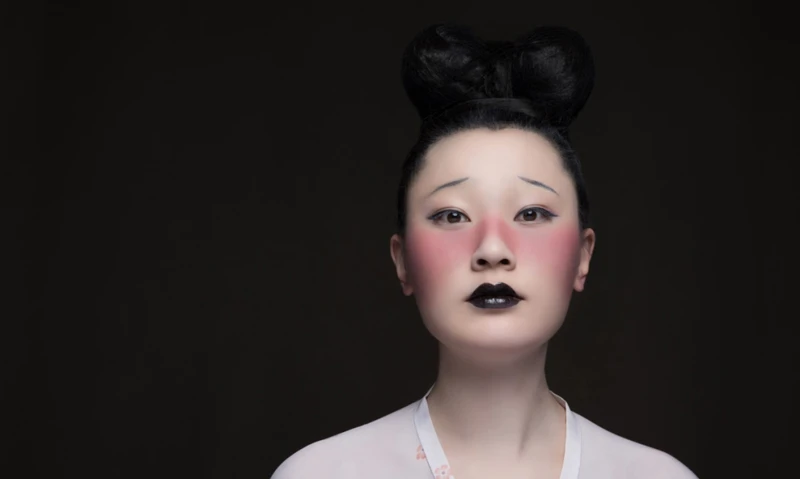
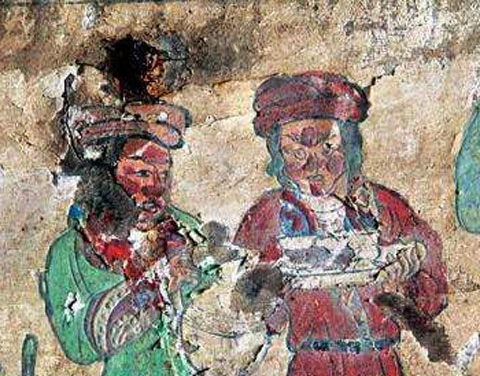
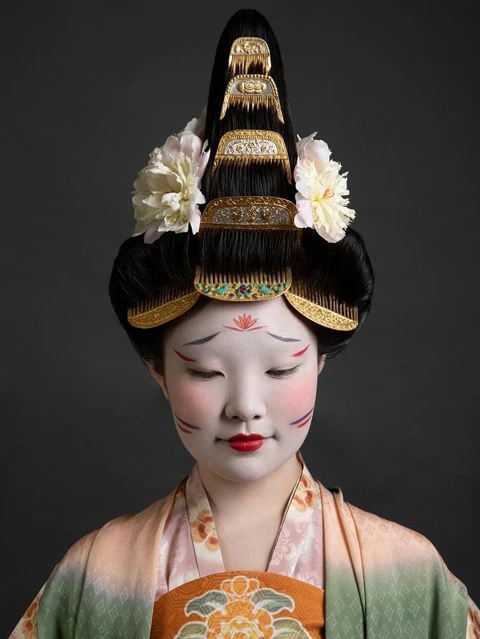

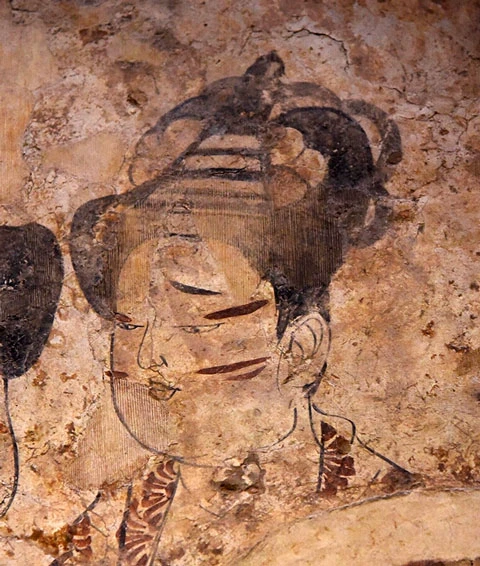
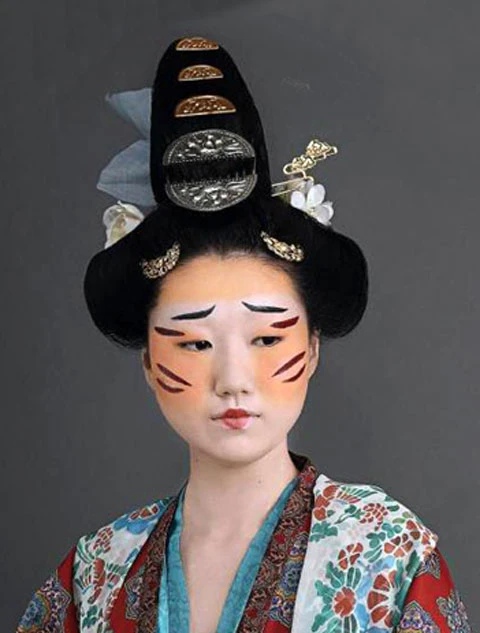
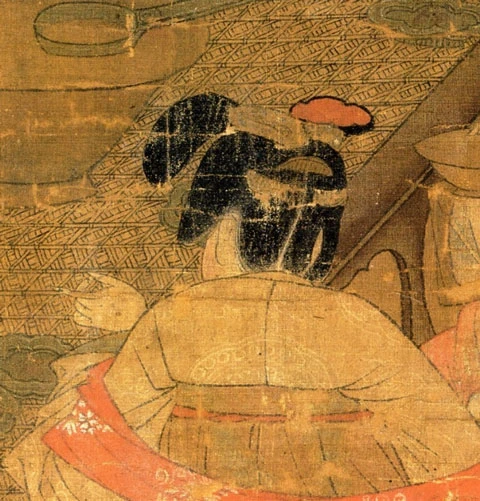
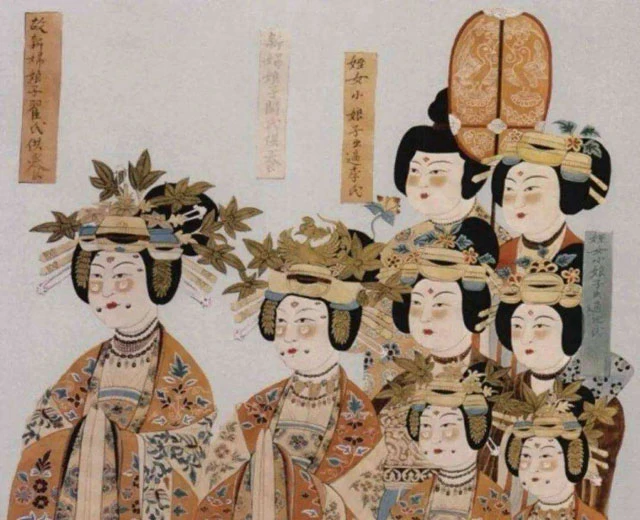
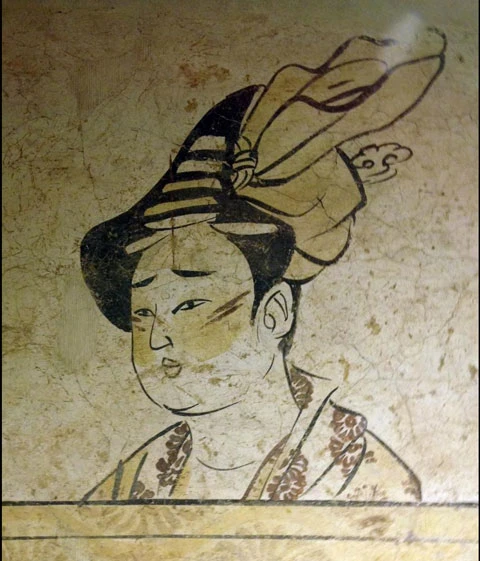
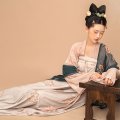
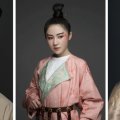

Interesting
Sangat unik😊😎